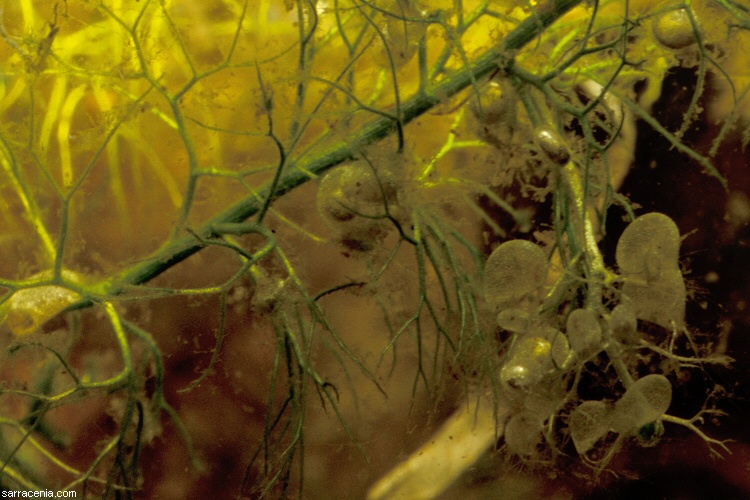
Bladdery shoots:
Here is another image showing a bladdery shoot (on the right)
in early elongation. Compare the bladderous shoot to the larger leafy shoot dominating
the image, and you can see how remarkably pronounced the shoot dimorphism is in these plants.
Meanwhile, look at the ultimate leaf segments on these plants--they are certainly not long and slender in any compelling way
that would make me separate the plant from Utricularia macrorhiza. Incidentally, I made sure that every plant that I
put into my aquarium to photograph had cleistogamous flowers, so these really are all Utricularia geminiscapa.
I previously mentioned that I was not sure if the plants normally hold their cleistogamous flowers erect or pendulous.
I am hesitant to draw any conclusions from these plants because it appears that something was dragging the
plants to my viewing platform.
The dock was evidently a hauling-out place for some kind of animal--a trail from the dock
through the emergent vegetation into the open water beyond was obvious. The water at the end of the dock was at least 1.5 meters deep,
so I think it was probably a beaver, otter, or something of that nature. I think the animal probably snags Utricularia
on it as it swims to the dock, which was quite convenient for me! But unfortunately, I cannot be sure if
these plants are normally free-floating as they were when I first found them (er...I mean when Beth
found them...) or whether they are typically partly
rooted in the muck, as dimorphic Utricularia normally are found.
Just another mystery for another day.